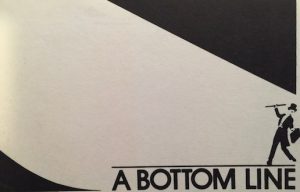Back in the mid-1980s I was running an internal project for the consulting arm of Arthur Andersen & Co, before it split off to morph into Andersen Consulting and then Accenture. We were creating a system development center to provide all of the tools and facilities to support large scale systems implementation projects. This was in the day when serious development was done on mainframe computers and setting up an environment for productive work could chew up a lot of time and fees without adding value for Andersen or its clients. The centers turned out to be a successful venture for several years.
Setting up the first one was a large scale project management problem in its own right. There were some challenges in creating a work plan and work breakdown structure for something that hadn’t been done before, but nothing out of the ordinary.
One odd conversation from that effort still sticks with me. It was Monday morning, well before 8AM, and I was parked in a partner’s office. I had learned that the only way to guarantee Mel’s attention was to catch him before he got wrapped up in anything else. He rolled in a short time later and the conversation unfolded like this:
Me: I’ve been going over the project plans for the development center. We’re on track, but I’m worried about the scheduled install of the mainframe next month.
Mel: So?
Me: Do we deal with it now or wait until it’s a full blown crisis?
Mel: Wait until it’s a crisis
You need to understand that Mel was an excellent manager and leader.
I was greatly puzzled.
Isn’t management supposed to be about anticipating problems and dealing with them before they get out of hand?
Working out why Mel was right and I was missing a bigger picture took me back to graduate school and eventually a Ph.D. in organizational design and innovation. It isn’t enough to have the right answer for the problem at hand. The right answer, deployed at the right time, gives you the opportunity to continue to play the game. Eventually, it may give you the opportunity to shape the game to make it a better game.

 “We need you back in the office now, Anthony’s team just got fired.â€
“We need you back in the office now, Anthony’s team just got fired.â€